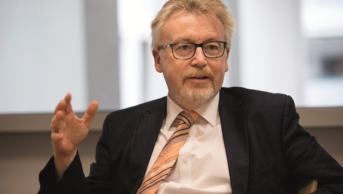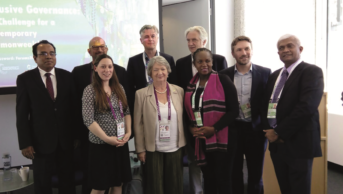
Callie Jones
More needs to be done to step up global vaccination rates in light of news from the World Health Organization (WHO) that one in five children still go without routine vaccines for preventable diseases. Moreover, five out of six 2015 global vaccination targets are in threat of being missed, WHO reiterated ahead of World Immunization Week (24–30 April 2015).
The warning first came in a 2014 assessment from WHO’s Strategic Advisory Group of Experts on Immunization, which described progress towards Global Vaccine Action Plan (GVAP) 2015 targets as “patchy and slow”. Sixty-five countries have still to reach the target of 90% immunisation against diphtheria, tetanus and pertussis. Three countries remain polio endemic in spite of efforts to eradicate cases after 2014. Maternal and neonatal tetanus, planned to be eliminated by the end of 2015, remain a problem in 24 countries. And rubella and measles vaccination rates are also behind target.
In Ebola-affected countries, vaccination programmes were all but abandoned in the peak of the outbreak in 2014. An epidemiological study published in Science (13 March 2015) projected that after 6–18 months of disruptions to childhood vaccinations in Guinea, Liberia and Sierra Leone, those countries would see increases in the size of regional measles outbreaks leading to 2,000–16,000 additional deaths. Yet such disruption was unavoidable — many programmes were paused for good reason to avoid unnecessary contact with health services during the epidemic; indeed WHO guidance dated 18 March 2015 suggested that vaccinations be postponed in areas that continue to have active Ebola transmission to avoid mass gatherings.
By 30 March 2015, WHO began recommending intensification of routine vaccination activities and campaigns in the affected West African countries. This followed an assessment of the risk of Ebola virus transmission versus the growing threat of vaccine-preventable disease outbreaks.
The final stages of the Ebola epidemic will be tough to see through — “there is a terrible, terrible and growing sense that this is done. This is not done,” WHO’s assistant director-general Bruce Aylward said of Ebola eradication efforts at a United Nations meeting in April 2015. Scaling up vaccination and getting health systems back on track will need to be major priorities for the global community.
One of the steps highlighted in the GVAP to boost immunisation is to strengthen health systems so that vaccines can continue to be given even in times of crisis. This can be viewed with the benefit of hindsight for the Ebola-affected countries of West Africa. Nonetheless, achieving this will not only help to deliver public health interventions like vaccination, but position countries to withstand any future disease outbreaks.


